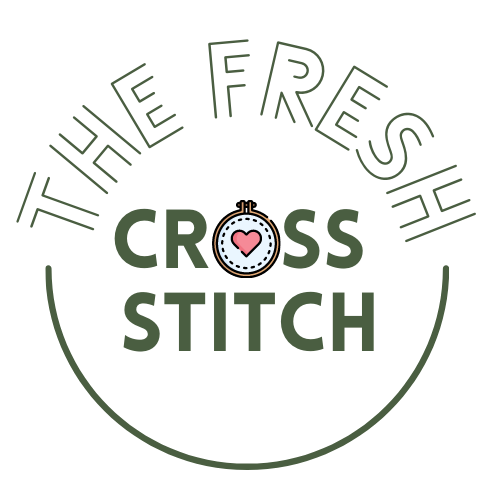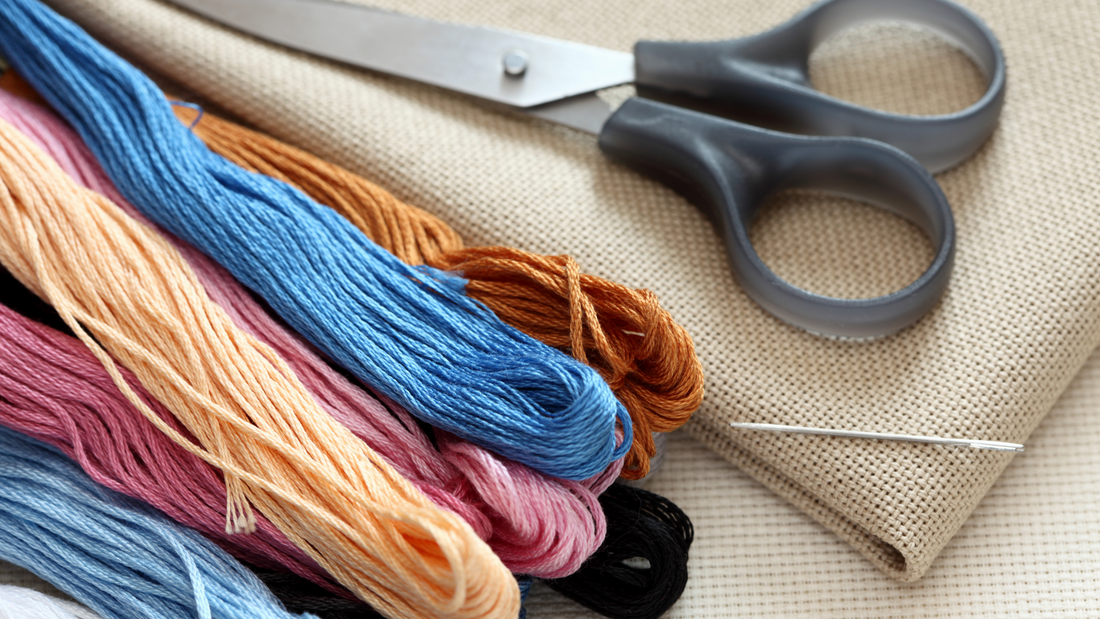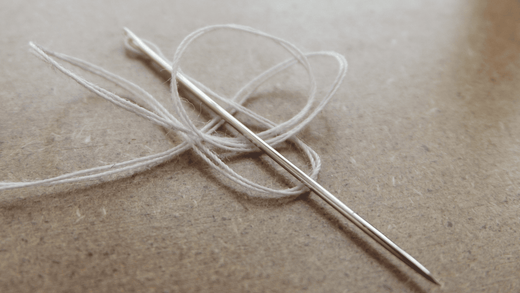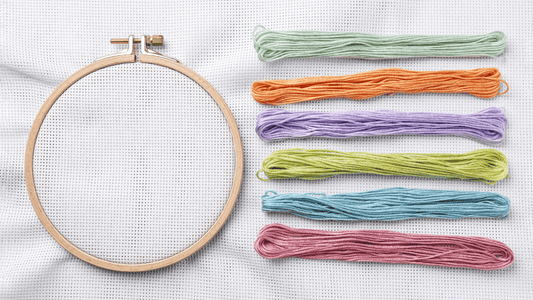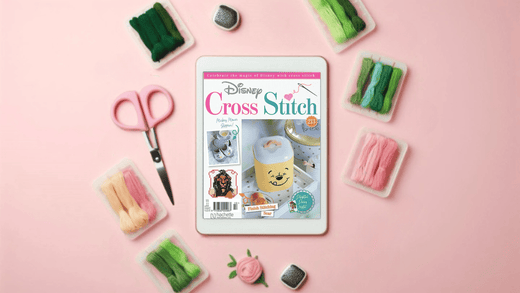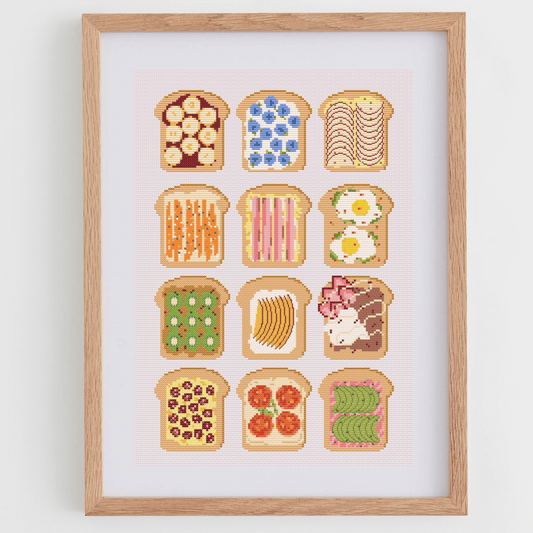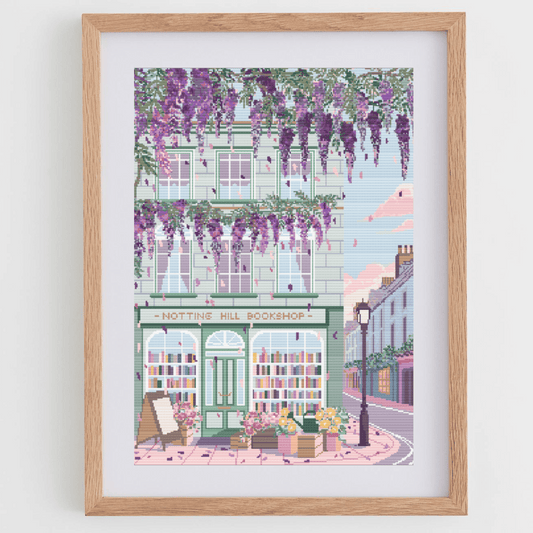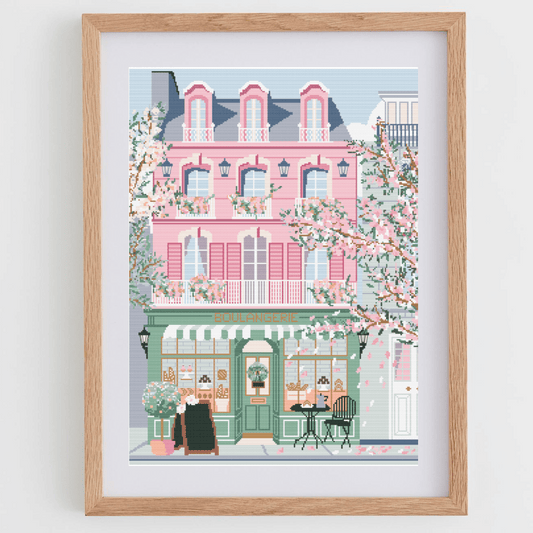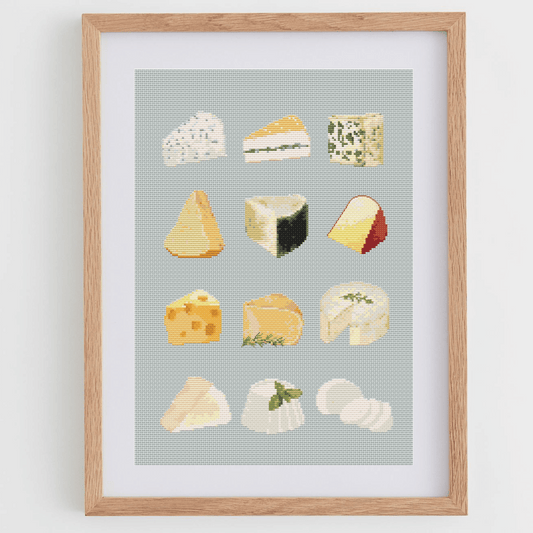Cross-stitching is a beloved craft that enables you to create beautiful and intricate designs using just three simple things: a needle, thread, and fabric. As you can see, it is really simple to start this craft, but you might feel intimidated by the choice of fabric. But that's okay because today I will guide you through the types of cross-stitch fabrics available.
Fabric is a quite important material for your crafts, since it is the base for your project. Even though cross-stitch is a really simple activity, there are some tips for cross-stitch beginners that you can take into account, and selecting the right fabric is one of them. Selecting the right cloth is essential for a successful cross-stitch project, as it determines the overall look, feel, and durability of the final piece. In this article, we will explore the various types of fabric available for cross stitch.
5 types of fabrics for cross-stitch
Aida Fabric
Aida fabric is perhaps the most popular choice for cross stitch enthusiasts. It is a woven fabric with visible, evenly spaced holes, making it easy to count stitches and follow patterns accurately. Aida fabric is available in different counts, referring to the number of stitches per inch. Common counts include 14, 16, and 18, with 14-count being the most widely used due to its versatility and ease of stitching. Not sure what a count is? No problem, keep reading and we’ll cover this in a bit.

Evenweave Fabric
Evenweave fabric is another excellent option for cross stitching. Unlike Aida fabric, it has an even thread count both horizontally and vertically, which results in a smoother appearance. Evenweave can be made of various materials like cotton, linen, or blends, offering a wide range of choices in terms of texture and drape. Its higher thread count requires more precise stitching, but it allows for intricate details and produces a more refined finished piece.

Example of an evenweave fabric for cross stitch
Linen Fabric
Linen fabric is a favorite among experienced cross stitchers who appreciate its natural beauty and unique texture. It is known for its durability and strength, and it offers a classic, timeless look to cross stitch projects. Linen fabric tends to be more expensive than other options, but its breathability and elegant finish make it worth considering, especially for heirloom pieces or special projects.
The reason linen fabrics are preferred among experienced cross-stitchers is the architecture of the fabric — the grid that guides you through the stitches is not as clear and well-structured as in aidas, hence you will need more experience in order to produce even and homogeneous crosses.
Specialty Fabrics
In addition to the aforementioned options, there are various specialty fabrics available for cross stitch enthusiasts. These fabrics come in different colors, patterns, and textures, allowing for more creativity and uniqueness in your projects. Some popular specialty fabrics include hand-dyed fabrics, metallic fabrics, and sparkly fabrics. These can add an extra dimension to your cross stitch piece and make it truly one-of-a-kind.
Soluble cross-stitch fabric
If you don’t prefer any of the previous options because you'd like to cross-stitch directly onto any fabric of your choice, there’s a solution for that as well. It is possible to cross-stitch onto fabrics that don’t have pre-formed grids — all you need is soluble cross-stitch fabric.
Soluble cross-stitch fabric is a type of material that provides a grid to guide you through the stitches and dissolves in water once you wash the finished design. The process typically involves stitching onto the soluble fabric, and then the fabric dissolves, leaving behind only the embroidered design. This type of fabric is commonly used in both machine and hand embroidery to create various embroidery or cross-stitch designs.
If you decide to purchase this type of fabric, ensure that you choose a specific one designed for cross-stitching. This material is available for both general embroidery and cross-stitching. If you opt for the latter, you need to find a fabric that includes a grid, allowing you to follow the stitches correctly.
Types of count in cross-stitch fabric
As we mentioned above, cross-stitch fabric is available in different counts, referring to the number of stitches per inch. Common counts include 14, 16, and 18, with 14-count being the most widely used due to its versatility and ease of stitching.
12-Count

- Commonly used count, especially favored by beginners.
- Features 12 stitches per inch or 4.7 stitches per centimeter.
- Larger holes make it easier for beginners to handle and see their progress.
- Suitable for a wide range of projects, providing a balance between ease of use and project detail.
14-Count

- This is one of the most widely used counts.
- It means there are 14 stitches per inch or 5.5 stitches per centimeter.
- Ideal for beginners due to its larger holes, making it easier to see and manipulate the needle.
16-Count

- Slightly more detailed than 14-count.
- Offers a finer weave with 16 stitches per inch or 6.3 stitches per centimeter.
- Suitable for those who are comfortable with smaller stitches and desire more intricate designs.
18-Count

- A higher count, providing even more detail.
- With 18 stitches per inch or 7.1 stitches per centimeter, it is best for advanced stitchers.
- Well-suited for intricate patterns and smaller finished pieces.
20-Count and Higher

- Aida fabric with counts of 20 or more stitches per inch is considered high-count Aida.
- Reserved for highly detailed and fine work.
- Requires more skill and patience due to the smaller holes and increased intricacy.
How much cross stitch fabric do I need?
Now that you know what those little numbers mean, you might be wondering how you should plan your cross stitch work: how much fabric and thread do I need or how do you calculate how large a cross-stitch pattern is? In order to ease this process, I have created a cross-stitch calculator you can use to plan your cross-stitch projects. All you have to do is include the numbers of stitches of your cross-stitch patterns, add some margins (if you want), and include the count you have chosen. That’s it! The calculator will indicate how much fabric you need to buy, in inches and centimeters.
Choosing the right fabric is an important decision when starting a cross stitch project. The fabric you select will not only affect the ease of stitching but also influence the overall look and feel of the final piece. Consider the intricacy of your design, the level of detail you want to achieve, and your personal preferences when deciding between Aida, evenweave, linen, or specialty fabrics. Experimenting with different fabrics can be an exciting part of your cross stitch journey, allowing you to explore new possibilities and create truly remarkable works of art.
If you’re already chosen your fabric for your cross-stitch project, you might want to move on to the next step and choose the right cross-stitch thread. Keep reading my blog articles on cross stitch for beginners, including what’s the best thread for cross-stitch, and start your journey into enhancing your cross-stitch abilities!
